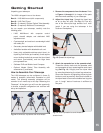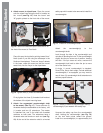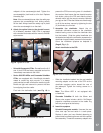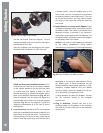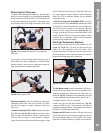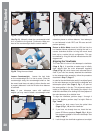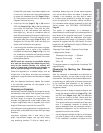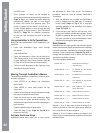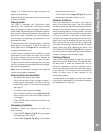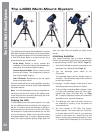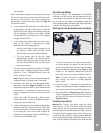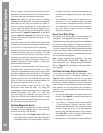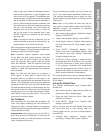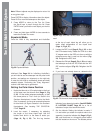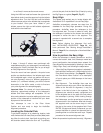
Speeds 7 or 8: Best used for rough centering of an
object in the viewfi nder.
Speed 9: Moves the telescope quickly from one point
in the sky to another.
Playing Audio
The LX80 is equipped with Astronomer Inside
technology. This revolutionary technology provides
object descriptions of night sky objects while you are
viewing them. Object descriptions for the Moon, planets,
stars, clusters, nebulae and galaxies are presented by
Astronomer Inside. Information such as temperature,
size, distance and mythology are presented in a fun
and entertaining way.
To activate Astronomer Inside technology a night sky
object needs to be selected. To select an object, go
to the Object menu. See Page 38 for instructions on
navigating the Objects menu.
Once an object is selected on the AudioStar, an audio
presentation for that object will begin to play. While
the audio is playing, the volume can be adjusted by
pressing the 7 (volume down) or 9 (volume up) keys.
To skip the current audio fi le and play the next, press
the ? key. If there are no other audio fi les for that object,
the audio will stop playing.
Note: while the telescope is slewing to an object the
volume control feature is disabled.
Entering Data into AudioStar
• Use the Number keys to enter digits.
• Use the Arrow keys to scroll through numbers 0
through 9 and the alphabet. The Down Arrow key
begins with the letter “A;” the Up Arrow key begins
with digit “9.”
• To move the cursor across the display:
Use the Right or Left Arrow key (Page 33, Fig 39,
5) to move the cursor from one number to the next
in the display.
• Press ENTER when the desired information has
been entered.
Navigating AudioStar
AudioStar’s menus are organized for quick and
easy navigation:
• Press ENTER (Page 33, Fig 39, 2) to go deeper
into AudioStar’s menu levels.
• Press MODE (Page 33, Fig 39, 3) to move back
toward the top menu level.
• Press the Scroll keys (Page 33, Fig 39, 7) to move
up and down through the options or lists.
Observe the Moon
Point your telescope at the Moon (note that the
Moon is not visible every night). Use your AudioStar
handbox to practice using the arrow keys and the slew
speeds to view different features. The Moon contains
many interesting features, including craters, mountain
ranges, and fault lines. The best time to view the Moon
is during its crescent or half phase. Sunlight strikes
the Moon at an angle during these periods and adds a
depth to the view. No shadows are seen during a full
Moon, making the overly bright surface to appear fl at
and rather uninteresting. Consider the use of a neutral
density Moon fi lter when observing the Moon. See
OPTIONAL ACCESSORIES, Page 52. Not only does it
cut down the Moon’s bright glare, but it also enhances
contrast, providing a more dramatic image.
Tracking Objects
As the Earth rotates beneath the night sky, the stars
appear to move from East to West. The speed at which
the stars move is called the sidereal rate. You can
setup your telescope to move at the sidereal rate so
that it automatically tracks the stars and other objects
in the night sky. The tracking function automatically
keeps an object more or less centered in the
telescope’s eyepiece.
To automatically track objects, you fi rst need to learn
how to set your telescope in its home position and align
the telescope on the night sky.
23
Getting Started



